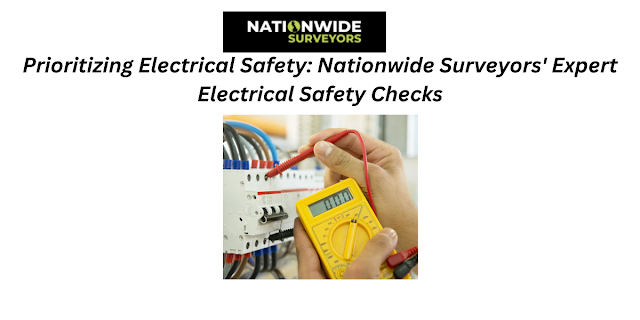What Does an Electrical Installation Condition Report Reveal?
An electrical installation condition report (EICR) is a vital document that ensures your electrical systems are safe and compliant with current regulations. Whether you're a property owner, landlord, or business operator, obtaining an EICR can help identify potential hazards within your electrical installations. At Nationwide Surveyors, we understand the importance of ensuring that your electrical systems are functioning safely, which is why we provide thorough EICR assessments. In this blog, we’ll break down what an EICR reveals and why it’s crucial for the safety of your property.
What is an Electrical
Installation Condition Report?
An EICR is an official inspection that assesses the
condition of the electrical wiring and components in a building. It is
typically carried out by a qualified and registered electrician who will
examine everything from the electrical panels to the wiring and sockets. This
report is essential in determining whether an electrical installation is safe
for continued use or if any repairs or upgrades are required to meet legal
safety standards. The goal is to identify any defects, deterioration, or
potential hazards that could pose a risk to the property or the people
occupying it.
What Does an EICR Reveal?
- The
Condition of Wiring and Components
The primary purpose of an EICR is
to assess the condition of the electrical system. This includes evaluating the
wiring, sockets, circuit boards, and other electrical components. Over time,
electrical systems can become worn out, which can lead to faults or even
dangerous situations such as electric shocks or fires. The EICR will highlight
any issues, such as frayed wiring, outdated electrical panels, or improperly
installed circuits, which could compromise safety.
- Compliance
with Regulations
Electrical installations are
subject to a range of national and international safety regulations, such as
the Wiring Regulations (BS 7671) in the UK. The EICR assesses whether the
electrical system complies with these standards. If your property has been
fitted with outdated systems or equipment that no longer meets current safety
standards, the report will flag these issues. Compliance with these regulations
is not only crucial for safety, but also to avoid legal consequences,
especially for landlords who are required by law to have an EICR performed at
regular intervals.
- Identifying
Potential Hazards
One of the most critical things
an EICR can reveal is the presence of electrical hazards. This includes
anything that could pose a risk of electric shock, fire, or other safety
concerns. The report will point out any potential risks such as overloaded
circuits, exposed wires, or faulty earth bonding. Identifying these risks early
on allows property owners and landlords to take proactive steps to rectify them
before they lead to a serious accident.
- Recommending
Repairs or Upgrades
The EICR doesn't just identify
problems; it also provides a clear picture of the necessary remedial actions.
For instance, the report might recommend that certain wires be replaced, that
additional safety measures be put in place, or that outdated equipment be
upgraded to meet current standards. These recommendations ensure that your
electrical system is safe, efficient, and up to code.
- Reviewing
the Risk of Electric Shock or Fire
An EICR reveals the risk of
electrical shock or fire within the property. An electrical fault could cause
the system to short-circuit, resulting in sparks that could ignite surrounding
materials, potentially causing a fire. Additionally, exposed or damaged wiring
increases the likelihood of electric shocks. This is particularly important for
buildings that house vulnerable individuals such as children, elderly people,
or those with disabilities. An EICR identifies such risks and allows for timely
corrective actions.
- Frequency
of Inspections
While an EICR is a detailed and
essential report, it is not a one-time inspection. Electrical systems, like all
infrastructure, need regular checks to ensure continued safety. Most properties
require an EICR every 5 to 10 years, depending on the usage and type of
installation. Additionally, properties with heavy electrical usage or in areas
with extreme weather conditions may require more frequent assessments. Regular
EICRs help property owners stay ahead of potential problems and ensure the
long-term safety of the electrical system.
Why Choose Nationwide Surveyors?
At Nationwide Surveyors, we
pride ourselves on delivering reliable, comprehensive, and accurate electrical
installation condition reports. Our team of fully qualified and experienced
professionals ensures that every aspect of your property’s electrical system is
thoroughly examined and reported. We provide detailed, easy-to-understand
reports that highlight any issues and offer clear recommendations for any
necessary repairs or upgrades.




Comments
Post a Comment